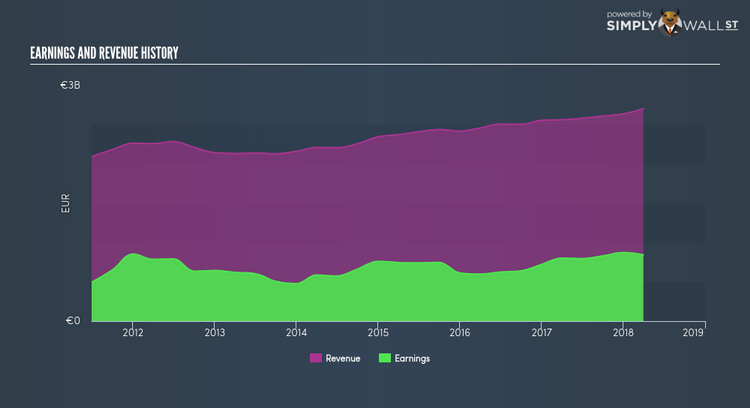How Should You Think About Deutsche Börse Aktiengesellschaft’s (ETR:DB1) Risks?

If you are looking to invest in Deutsche Börse Aktiengesellschaft’s (XTRA:DB1), or currently own the stock, then you need to understand its beta in order to understand how it can affect the risk of your portfolio. The beta measures DB1’s exposure to the wider market risk, which reflects changes in economic and political factors. Not all stocks are expose to the same level of market risk, and the market as a whole represents a beta value of one. A stock with a beta greater than one is expected to exhibit higher volatility resulting from market-wide shocks compared to one with a beta below one.
See our latest analysis for Deutsche Börse
An interpretation of DB1’s beta
Deutsche Börse’s beta of 0.51 indicates that the company is less volatile relative to the diversified market portfolio. This means the stock is more defensive against the ups and downs of a stock market, moving by less than the entire market index in times of change. DB1’s beta implies it may be a stock that investors with high-beta portfolios might find relevant if they wanted to reduce their exposure to market risk, especially during times of downturns.
Does DB1’s size and industry impact the expected beta?
A market capitalisation of €21.89B puts DB1 in the basket of established companies, which is not a guarantee of low relative risk, though they do tend to experience a lower level of relative risk compared to smaller entities. Conversely, the company operates in the capital markets industry, which has been found to have high sensitivity to market-wide shocks. As a result, we should expect a low beta for the large-cap nature of DB1 but a higher beta for the capital markets industry. It seems as though there is an inconsistency in risks from DB1’s size and industry. There may be a more fundamental driver which can explain this inconsistency, which we will examine below.
Is DB1’s cost structure indicative of a high beta?
An asset-heavy company tends to have a higher beta because the risk associated with running fixed assets during a downturn is highly expensive. I examine DB1’s ratio of fixed assets to total assets to see whether the company is highly exposed to the risk of this type of constraint. Considering fixed assets is virtually non-existent in DB1’s operations, it has low dependency on fixed costs to generate revenue. As a result, the company may be less volatile relative to broad market movements, compared to a company of similar size but higher proportion of fixed assets. This is consistent with is current beta value which also indicates low volatility.
What this means for you:
You could benefit from lower risk during times of economic decline by holding onto DB1. Its low fixed cost also means that, in terms of operating leverage, it is relatively flexible during times of economic downturns. What I have not mentioned in my article here are important company-specific fundamentals such as Deutsche Börse’s financial health and performance track record. I highly recommend you to complete your research by taking a look at the following:
Future Outlook: What are well-informed industry analysts predicting for DB1’s future growth? Take a look at our free research report of analyst consensus for DB1’s outlook.
Past Track Record: Has DB1 been consistently performing well irrespective of the ups and downs in the market? Go into more detail in the past performance analysis and take a look at the free visual representations of DB1’s historicals for more clarity.
Other High-Performing Stocks: Are there other stocks that provide better prospects with proven track records? Explore our free list of these great stocks here.
To help readers see pass the short term volatility of the financial market, we aim to bring you a long-term focused research analysis purely driven by fundamental data. Note that our analysis does not factor in the latest price sensitive company announcements.
The author is an independent contributor and at the time of publication had no position in the stocks mentioned.

